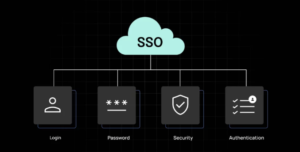
The educating all students test is more than just an exam—it’s a crucial gateway for educators who aspire to create inclusive, equitable learning environments for all students. Designed to evaluate a teacher’s knowledge, skills, and commitment to supporting diverse student populations, this test plays a vital role in ensuring every child receives a quality education, regardless of their background or learning needs.
In today’s increasingly diverse classrooms, teachers must be prepared to address a wide range of student needs, including those of English language learners, students with disabilities, and children from various cultural and socioeconomic backgrounds. The educating all students test measures a teacher’s readiness to meet these challenges with empathy, knowledge, and strategic teaching methods. This guide will take you through everything you need to know about the exam—its structure, purpose, preparation strategies, and why it matters now more than ever.
Understanding the Purpose of the Educating All Students Test
The educating all students test is a New York State Teacher Certification Exam (NYSTCE) that evaluates educators’ ability to effectively teach students from all backgrounds and with various needs. Its primary goal is to ensure that teachers understand the principles of diversity, equity, and inclusion in the classroom. This includes understanding students’ cultural backgrounds, learning disabilities, language barriers, and social-emotional needs.
Educators taking the test are assessed on their ability to apply inclusive teaching strategies, create welcoming classroom environments, and communicate effectively with both students and families. The test also measures a teacher’s familiarity with relevant laws, such as the Individuals with Disabilities Education Act (IDEA) and the Every Student Succeeds Act (ESSA). By emphasizing these key areas, the educating all students test promotes an educational landscape where no student is left behind.
Breakdown of the Exam Format and Content Areas
The educating all students test consists of selected-response questions (multiple choice) and a constructed-response (written) assignment. The test is timed, and candidates must demonstrate both theoretical understanding and practical application of inclusive teaching methods.
There are five main content areas covered:
- Diverse Student Populations
- English Language Learners
- Students with Disabilities and Other Special Learning Needs
- Teacher Responsibilities
- School-Home Relationships
Each section targets essential teaching competencies. For instance, in the “English Language Learners” section, candidates must demonstrate knowledge of second language acquisition and strategies for scaffolding instruction. The “Teacher Responsibilities” section focuses on ethical and legal obligations, such as reporting abuse or collaborating with support staff. Mastery of all sections is crucial to passing the educating all students test.
How to Prepare Effectively for the Educating All Students Test
To excel on the educating all students test, preparation should start with a thorough review of the test framework provided by NYSTCE. This framework outlines each content area, along with sample questions and scoring guidelines. Using it as a roadmap, aspiring teachers can focus their study sessions strategically.
It’s also beneficial to engage in practice tests and simulation exercises that mirror the actual exam experience. These tools help reduce test anxiety and reveal areas where additional study is needed. Furthermore, using flashcards, joining study groups, and reading current research on inclusive education can deepen your understanding of core concepts. Don’t underestimate the power of real-world experience either—volunteering or observing in diverse classroom settings can provide firsthand insight into inclusive teaching practices.
Why the Educating All Students Test Matters in Today’s Classrooms
In a time where diversity in the classroom is ever-growing, the educating all students test ensures that teachers are prepared to meet the needs of every learner. This test is a reflection of a societal shift toward valuing equity in education—not just in theory, but in practice.
Teachers who pass this test demonstrate a commitment to creating safe, supportive, and academically enriching environments. This leads to better student engagement, higher academic performance, and stronger relationships between schools and communities. When educators are trained and tested to support all learners, schools become places where students of all backgrounds can thrive.
Moreover, the test holds educators accountable to inclusive standards and encourages continuous professional growth. By mandating this exam, education boards ensure that schools hire professionals who are not only content experts but also advocates for social justice and equity.
Common Challenges and How to Overcome Them
One of the biggest challenges candidates face on the educating all students test is mastering the wide range of content in a limited amount of time. From legal mandates to cultural competence, the breadth of topics can feel overwhelming. To manage this, it’s important to create a structured study plan and break the content into manageable sections.
Another common hurdle is the constructed-response section, where candidates must write a coherent, well-organized essay under time constraints. Success here depends on practicing your writing skills and becoming familiar with the scoring rubric. Look at sample responses and work on articulating your ideas clearly and concisely.
Additionally, some test-takers struggle with the abstract nature of some questions, especially those involving hypothetical classroom scenarios. To combat this, try to connect each concept with real-life examples or case studies. Visualization and role-playing exercises can also help deepen your understanding and make the content more relatable.
Conclusion: Building a Better Future Through Inclusive Education
The educating all students test is more than a certification requirement—it’s a testament to the value we place on equity in education. As our schools continue to grow more diverse, the need for skilled, compassionate, and inclusive educators has never been greater. This test empowers teachers to become advocates for every student, equipping them with the tools and mindset necessary to foster inclusive excellence.
By investing the time and effort to prepare for this exam, you’re not only setting yourself up for professional success—you’re also contributing to a larger mission of transforming education for the better. In the end, passing the educating all students test means more than just a checkmark on your résumé; it signifies your readiness to teach, inspire, and uplift all students, no matter their background.
FAQs About the Educating All Students Test
1. What is the Educating All Students Test?
The Educating All Students Test is a certification exam for teachers that assesses their ability to support diverse learners in inclusive classrooms.
2. Who needs to take the Educating All Students Test?
All prospective teachers in New York State are required to pass the test to become certified.
3. How many questions are on the test?
There are approximately 40 selected-response questions and one constructed-response item.
4. How long is the exam?
The test is typically 135 minutes long, including time for instructions.
5. What is a passing score for the test?
The passing score is 520 on a scale of 400–600.
6. Can I retake the test if I fail?
Yes, you can retake the test after a 30-day waiting period.
7. What is the cost of the test?
The registration fee is $92.
8. Are there accommodations for test-takers with disabilities?
Yes, accommodations are available through the testing service for eligible candidates.
9. What study materials are recommended?
The NYSTCE preparation guide, online practice tests, and study books like “Educating All Students Study Guide” are highly recommended.
10. How does the test benefit teachers professionally?
Passing the test demonstrates your readiness to support diverse learners and improves your chances of employment in inclusive education settings.







